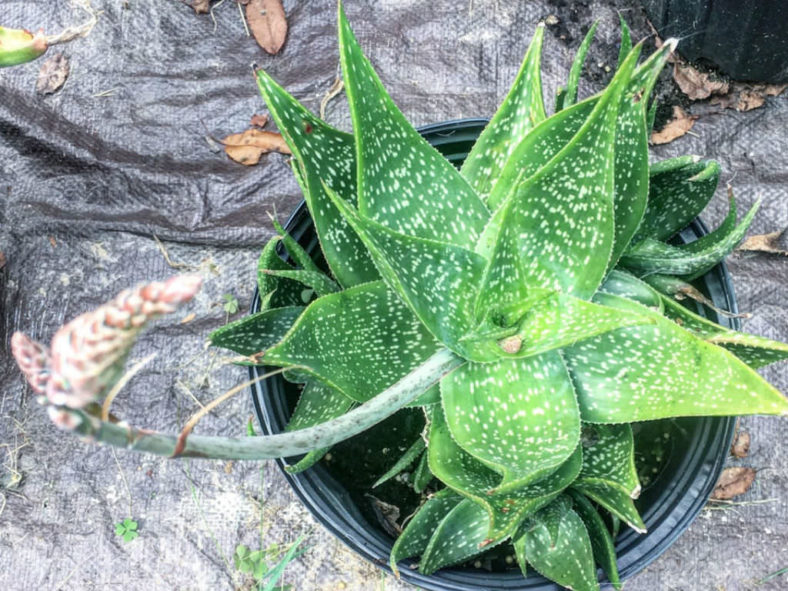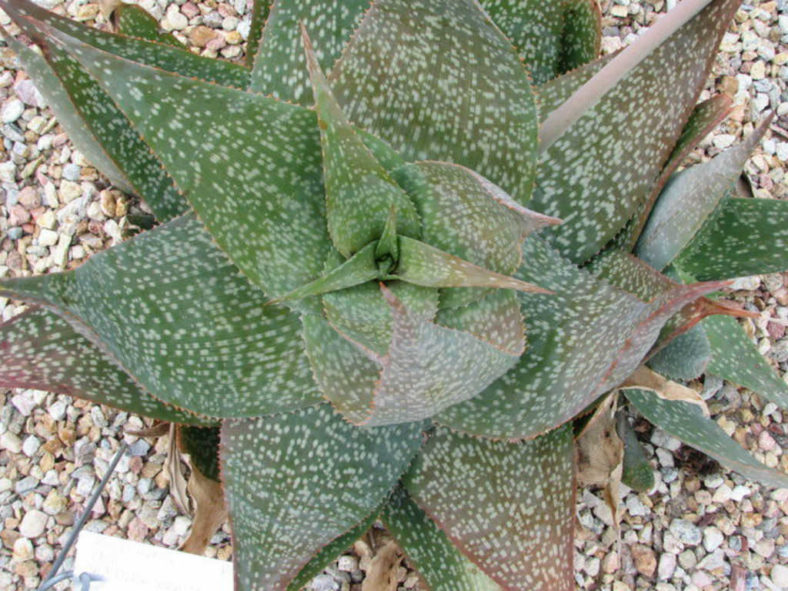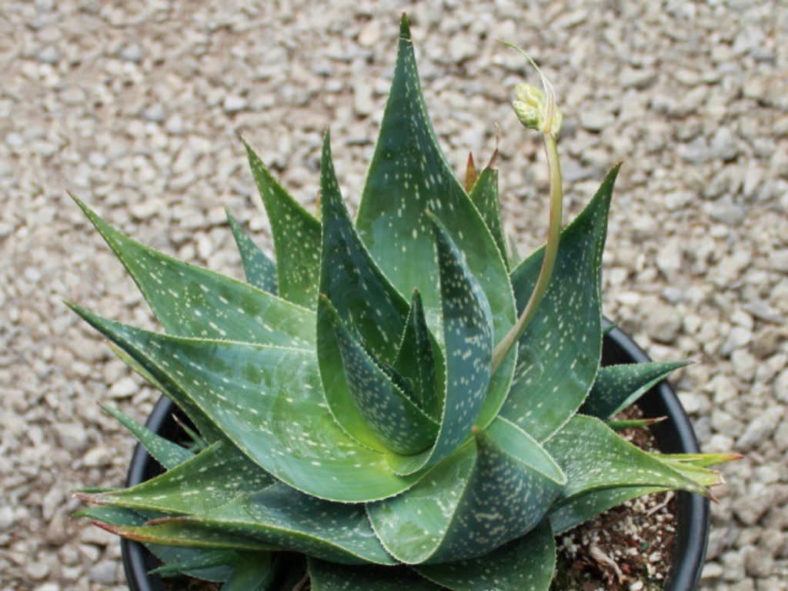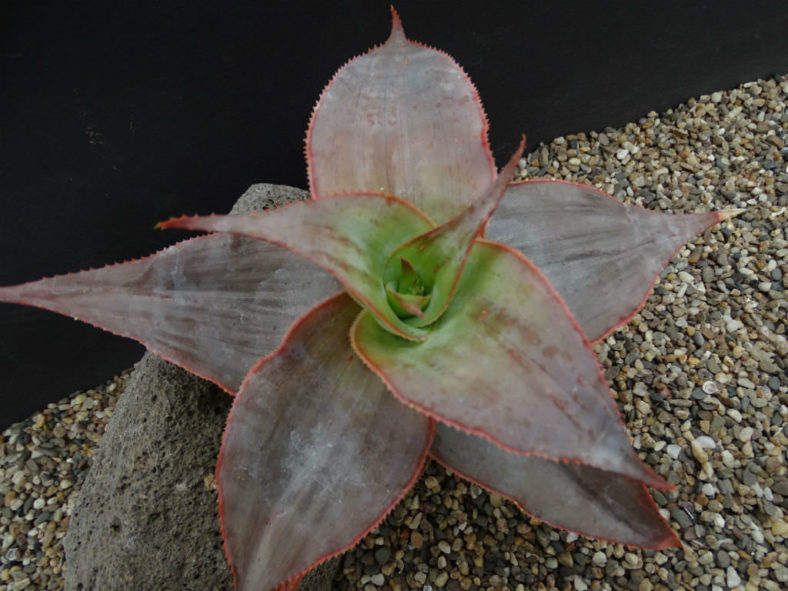Scientific Name
Aloe deltoideodonta Baker
Synonym(s)
Aloe horombensis, Aloe rossii
Scientific Classification
Family: Asphodelaceae
Subfamily: Asphodeloideae
Genus: Aloe
Description
Aloe deltoideodonta is a succulent plant that forms stemless or short-stemmed rosettes of pale green, spotted or unspotted leaves with tiny teeth. It is an aggressive offsetter and can grow up to 12 inches (30 cm) tall. The leaves are fleshy, triangular and can measure up to 8 inches (20 cm) long and 2 inches (5 cm) wide.
From late summer to fall, the mature rosettes produces short, branched or unbranched, conical inflorescence with red-orange flowers.

Hardiness
USDA hardiness zones 9b to 11b: from 25 °F (−3.9 °C) to 50 °F (+10 °C).
How to Grow and Care
Aloes can live long and thrive with very little care. These plants are great for beginners.
When growing Aloes indoors, place your plants near a southern or southwest-facing window that gets plenty of bright, indirect light. To keep your Aloes looking green, avoid exposing them to direct sun, which can cause leaves to brown. Rotate the pots once or twice a week to receive equal lighting for all sides of the plants. Rotating your Aloe also helps balance out the look of the plant, as leaves tend to grow toward the sunlight.
Outdoors provide light shade, especially during the hottest parts of the day. An excellent spot for growing Aloe outdoors is on a covered patio or porch.
Plant Aloes in a well-drained soil specially formulated for cacti and other succulents or make your soil mix. Drainage is essential because too much moisture around roots can cause root rot.
These succulents need regular watering but are very tolerant of drought conditions for short periods. Water deeply, but only when the soil is completely dry. Cut back on watering during the winter months. Overwatering is the top reason Aloe plants die. Do not let water stand in the rosettes.
Learn more at How to Grow and Care for Aloe.
Origin
This species is native to Madagascar.
Hybrids
Links
- Back to genus Aloe
- Succupedia: Browse succulents by Scientific Name, Common Name, Genus, Family, USDA Hardiness Zone, Origin, or cacti by Genus
Photo Gallery
Click on a photo to see a larger version.



